Let’s talk about space! We definitely don’t get to talk about sci-fi enough in the TTRPG community. We’ve got swords and spells galore, a myriad of fantasy settings as diverse as the worlds they portray, but when it comes to ships and interstellar travel and really big lasers we’re sorely lacking. How many settings with starships or mechs can you name? There are a few titles that get mentioned over and over, but many are lucky to make it off one hand’s worth of fingers in their tally.
Enter Coriolis, not exactly one of Free League’s newest offerings but one I’ve had my eye on for some time. I’ve been very impressed with what I’ve seen of other Free League titles such as Symbaroum and The One Ring, sandboxes that marry simplistic rules with rich lore. Can we expect the same high standards with the Coriolis core book, a setting oft described as The Arabian Nights in space? Let’s fire up the engines and see what’s out there!
 Coriolis, The Third Horizon
Coriolis, The Third Horizon
Designer: Konstantinos Kostulas, Tomas Härenstam, Nils Karlén
Publisher: Free League
Format: Tabletop RPG
Price: 488 kr (about $46 USD)
Copy provided by publisher
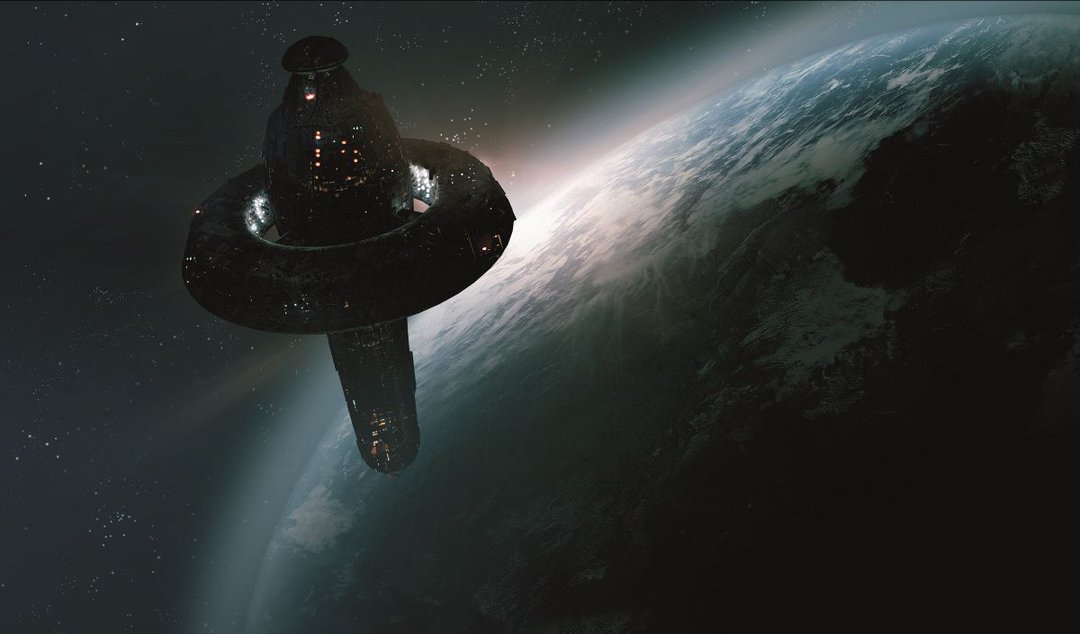
Like some of the greats before it, Star Trek DS9 or Babylon 5, Coriolis understands sometimes it takes a really cool space station to get things done.
A Galaxy Far Far Away
I distinctly remember the conversation I had with a friend at PAX East earlier this year. We were sitting together, enjoying lunch, when the topic turned to tabletop RPGs. Specifically, my friend said he was thinking about running a sci-fi game in space and was struggling to find a system he was excited to put it into. Fans of Dungeons & Dragons will point to Spelljammer, while Pathfinder players will no doubt recommend Starfinder. Both solid choices in their own rights, but my friend wasn’t interested in either. He wanted something distinctly different from the usual D&D feel he and his players were used to. We brainstormed for a while, but the lingering feeling remained: in all the innumerable systems out there, when it came to players crewing a starship it seemed like our community was seriously underserved.
I had just received a review copy of Coriolis that day at the convention, and I told my friend I’d report back on it. Some months have come and gone, and now that I’ve had time to digest this beautiful 384-page hardcover, I’m pleased to report the findings to you as well. Coriolis may just be one of the best systems I’ve ever seen if you’re looking to make your players’ starship their command center, their home, and even a character in their journey, along with how they get from point A to B.
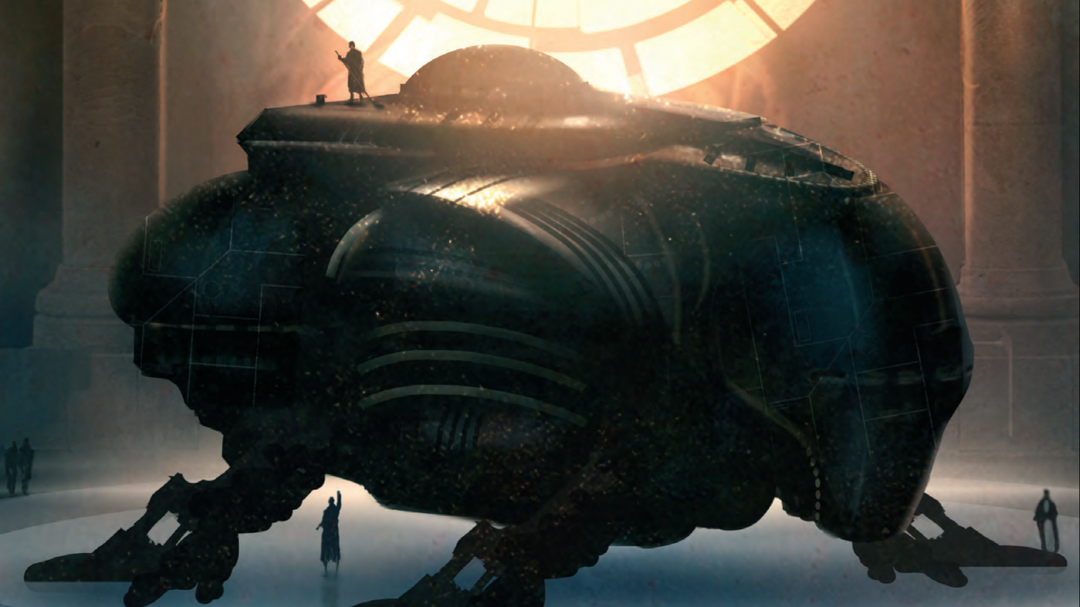
Ship designs are pretty varied in this game. This one could be yours if you have a thing for spacefaring frog-ships.
Coriolis is centered on a place called the Third Horizon. Once, several hundred years ago, Earth sent out massive colony ships to settle far beyond the stars. The Zenith was one such ship, fated to spend hundreds of years drifting across vast distances, drawing slowly closer to its destination. When it arrived, however, full of mission and purpose, it found that the system was already inhabited. Humans had discovered an ancient portal technology some time after the Zenith’s departure and used it to jump far ahead of the ships they’d once launched. In the centuries that the Zenith floated out in the dark, humanity had settled both a First and Second Horizon, linked star systems that became increasingly controlling and restrictive. When the First Horizon tried to invade the Third, a place where many who yearned for freedom had fled to, a massive war broke out. The Third Horizon destroyed its ancient portals, sealing it’s 36 star systems off from the rest of humanity. Slowly, isolation crept over the war-torn worlds of the Third Horizon, a new dark age for the splintered factions living there.
This was when the Zenith appeared. Cannibalizing their own ship for parts, the Zenithians build a massive space station in the center of the Third Horizon. It was known as Coriolis. The station was exactly the draw that the disparate and remote worlds needed to rally. It soon became a beacon of travel, commerce, and government, hosting a Council of Factions where representatives of most living in the Third Horizon could come to represent their interests.
Not everything in the Third Horizon is roses and honey now that Coriolis has drawn the 36 systems out of the aftermath of their recent war, however. This is where the players come in. There are still many factions in this corner of the universe (10 in total, including a schism of two from the Zenith) ranging from corporations to religious organizations to free traders and nomads. Even organized crime. And while not all the factions have seats on the council, all of them still vie for their own power and ideals. Your group will have to navigate this political landscape, taking jobs as they see fit. Will they be treasure hunters? Pilgrims? Will they take contracts to hunt pirates or maybe become pirates themselves? Perhaps carrying cargo or seeking salvage is more their style. Maybe they’d even like to be a travelling circus! If you can think it up, there’s a place for it in Coriolis.
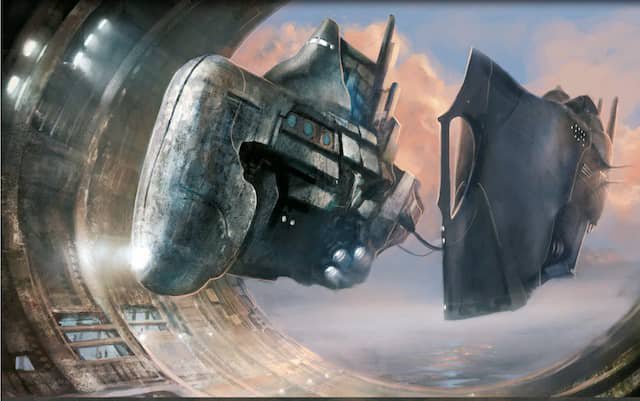
Some ships barely look like ships as we're used to them. On the other hand...
Of note, the core book lays two very interesting bits of lore into the center of this political hotbed. First is the Emissaries. Shortly after the Coriolis station brought the Third Horizon together, a mysterious alien race emerged from the nearby gas giant of Xene. A representative headed straight for Coriolis and demanded a seat on the council. Furthermore it claimed to be the incarnation of one of the Icons, the deities worshipped by those living in the Third Horizon. As if the political jumble present in this setting couldn’t get worse, the Emissary situation turned into a powder keg. One of the religious factions has closed its borders under the demand that the blasphemous Emissary steps down from the council and their claim. The ensuing chaos this has caused, blocking interstellar shipping and trade, may end in bloodshed if military force is used to open their borders once again.
The Emissaries herald a major plot change coming to the Horizon. There is a force within the game called The Dark Between the Stars. One part devil and one part faceless eldritch horror, the Dark works at the behest of the GM who can spend a special currency they accrue during play to make bad things happen at cinematically bad times (more on this in a bit). Some believe that the Emissaries may be agents of the Dark. There is no denying that once they appeared, many people began manifesting strange and wonderous powers. Powers for which they are feared and hunted. Powers that a player could build a character around if they so desired. Perhaps the Emissaries signal something terrible approaching, or perhaps they are simply a symptom themselves, a previously secluded people who were driven to seek aid by something deeper still. Only time will tell as things in the Third Horizon spiral ever further towards entropy.

There's a bunch of lore across the 36 systems, but the Kua system, where Coriolis is located, gets extra of course!
Your Journey Begins Here
Right from the get-go, I can see that Free League continues in Coriolis the same style of easy-to-teach rules pulled over a lore heavy setting. Stepping into this world is easy, as characters have only four stats (two physical and two mental), some skill points, and a few talents (special bonuses or abilities they can call on). Character creation is simple, though it should be noted that the talent list is quite extensive for players who really want to pour over abilities. The available classes are also interesting: while there are some familiar looking ones like Soldier or Data Spider, there are lots with a feeling unique to the setting such as Negotiator, Artist, or Fugitive. If you’d rather grab something premade and get to the action, there are suggestions for skills and talents with each class.
But creation doesn’t stop at characters. Your group will want to discuss together, along with the GM, the type of crew they’d like to form. Why? Well, they’ll need to build and purchase a ship, of course! This could be a pregenerated template from the book, or it could be custom built. If you can dream it up, you can have it here. Do you want a ship with a lush garden bubble in the center? It’s yours. You can build a huge rig that pulls up alongside debris in space, latching on with massive crane arms for salvage if that’s your thing. Maybe you’d rather have tons of living space for ferrying passengers (hiding secret smuggling compartments below everything). Or maybe you just want a speedy blockade runner. Or a gunship! My friend was considering a Cowboy Bebop style game where the players have their own ships docked inside a bigger ship; players in Coriolis can all invest in the piloting skill and have their own fighters to dock, not only doable in this system but a solution as well if you don’t make your main vessel capable of ship-to-ship docking or atmospheric re-entry. Whatever you choose, I’m in agreement with many others in that you should always give your ship the AI personality module. Make it more than just a ship. Make it a character!
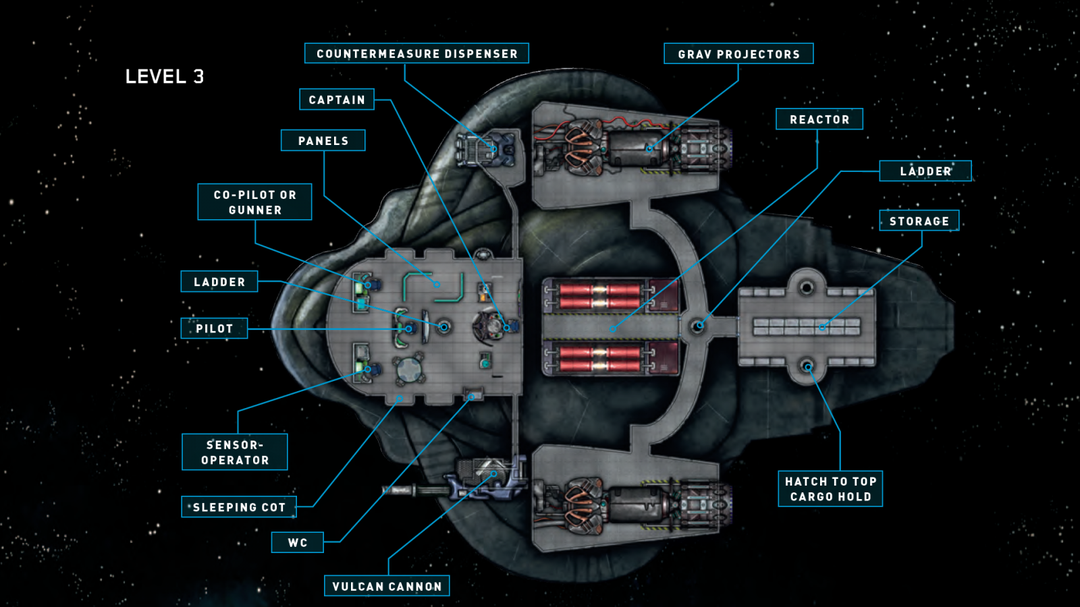
What all this means is that a prospective group to Coriolis is linked from the start. This is such a boon to GMs who struggle with “how do the players meet before the adventure.” They’ve worked together for a while and just bought their first ship. They’ll now be in debt trying to work off the loan. This also adds an easy extra incentive for jobs. Unless they’re planning to add their creditors to their list of antagonists, they’re going to need to make regular payments on that ship! The book includes a couple of modules you can use to kick things off if you need a push, as well. We’ll talk about how players crew the ship later when we talk about system mechanics, but I’ll say now that this is a game where everyone gets involved. There are no players stuck around, twiddling their thumbs, waiting for the pilot to bail them out of trouble during spaceship action. Everyone will have a role to play, so during character creation players will want to discuss what role they’d like to fill on the ship when they build it out together.
When you combine all the options for character and ship creation with 36 linked star systems worth of adventure, you get a heck of a lot of possibility (there are details on what each system contains, and Coriolis’s system gets an especially meaty writeup). You could have a game that revolves heavily around the Coriolis station, political and backstabbing at every turn. You could also set your game on the fringes, full of mystery, lost ruins, ancient powers, and dark monsters (yes, those exist in this setting as well). There’s a supernatural element to the game we’ll discuss later, and you can sprinkle that into the setting as much or as little as you wish. From the outset, this single core book gives a group just about everything they could want, and that makes it a fantastic value for your money.
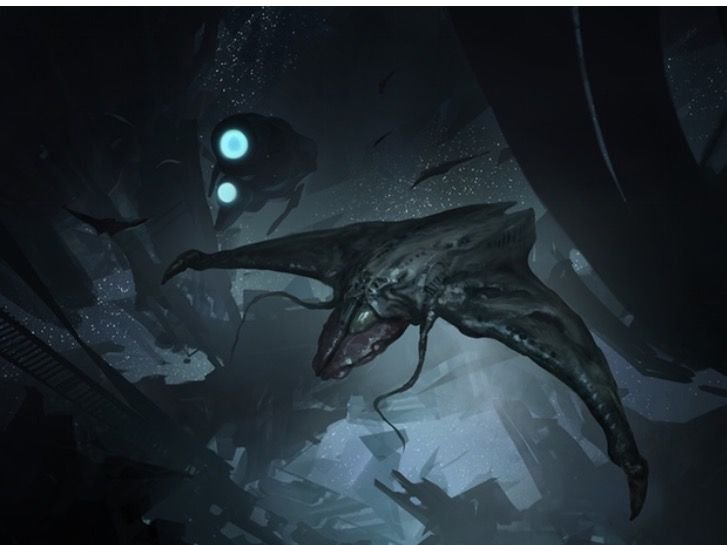
There are dark things out there, especially in the less traveled regions of space. Be careful!
Hello Darkness My Old Friend
Let’s talk mechanics! For every lover of lore in the TTRPG world, there’s another gamer who needs the satisfaction of systems. My friend specifically wanted something different in feel from Spelljammer so as to feel like they were playing a distinctly different game. Not just D&D in space. And different Coriolis is! Though not hard to teach to your players.
What we have here is a skill-based system. That is to say, checking for skill success as well as combat hits are all done through a character’s proficiency with the game’s skills. Whether you’re testing your Manipulation to get a deal from an ornery merchant or squeezing the trigger of your rifle with Ranged Combat, you add your ranks in that skill with the corresponding stat (again, there are 4 total character stats). You roll that many six-sided dice (d6s), and your roll is considered a success if there’s at least one 6 in the pool after rolling. So, for example, if I had 1 rank in Ranged Combat and 4 in my Agility skill, I’d roll 5d6 (five six-sided dice), and if I had at least one six I’d hit my target. Additional sixes grant bonuses or even critical success. Some skills can be rolled “untrained,” without any progression in them, while others like Piloting require you to have at least one rank in that skill in order to make the roll. Simple and quick! These easy rolls keep the action pumping and I love them for it.
Of course there are also rules for helping your allies, allowing friends to “kick in” and give the main roller +1 extra dice per friend, up to three helpers. There are also modifiers all over the place, usually ranging from 1 to 3. These modifiers add or subtract that many dice from the pool before rolling; maybe picking that lock is extra hard when gunfire keeps flying over your shoulders, so the GM puts a -1 on your roll. That kind of stuff. Other things like good quality gear also add bonuses to rolls, and this is noted on the gear entries themselves. All in all, these modifiers allow what is an otherwise overly-simple system to accommodate a wide range of situations and spice up events to keep things tense and interesting. Simple to learn, spicy on the fly!
Also, speaking of “tense and interesting,” we have to talk about Darkness Points.
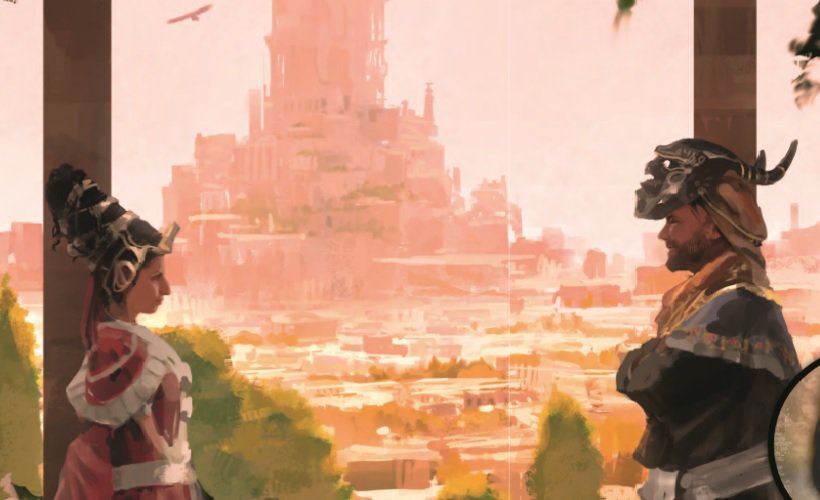
Are you a diplomat? A fighter? A spy? A mixed party will have a wide range of skills to draw from, but a team of specialists could do equally as well.
Darkness Points might just be one of my favorite parts of Coriolis. I love systems that mess with players’ greed. Having a system that empowers the GM is one thing, but when you put it in the hands of the players, when you tell them their fate is in their own hands and ask them how much they want to gamble, the game launches into a whole new orbit. Darkness Points (DP) are a special currency that the GM can spend on all kinds of “bad” things. Guns jam after firing, ship systems malfunction, enemies dodge shots (normally they don’t get defense rolls). Things happen at just the worst possible time. Here’s the catch though. Outside of certain premade scenarios that award a few at the start, the GM is only awarded DP when the players call for a reroll on their dice. “Praying to the Icons,” or the deities of Coriolis, is hard-baked into the mechanics. Once per roll, a player can invoke a prayer to their gods and reroll as many dice as they wish. They might be looking to turn a failure into a success or a success into a crit. They could in theory do this on every single roll they make! The cost is one DP to the GM each time.
Before you ditch this review thinking DP are carte blanche for GMs to punish players, let me tell you that they are first of all optional. The book does state that if your group isn’t comfortable with this mechanic, you can totally cut it from your sessions. Personally, I think it’s a fantastic addition to the system and would never play without it, but that’s just preference speaking. Secondly, it should be noted that the GM can’t just do anything they want with DP. There are specific uses and associated costs in the book. For example, jamming a gun costs 1 DP and it happens after an attack is made. So if your player’s burst of gunfire drops a foe, DP won’t stop that. On the other hand, if they miss their burst on an assassin charging in with a blade, and then their gun jams. Well, that’s a whole different narrative moment, now isn’t it? Use or don’t use Darkness Points as you wish, but it is this reviewer’s opinion that you should strongly consider adding them to your game session. They’re a distinct addition that Coriolis brings to your table. Try them out!
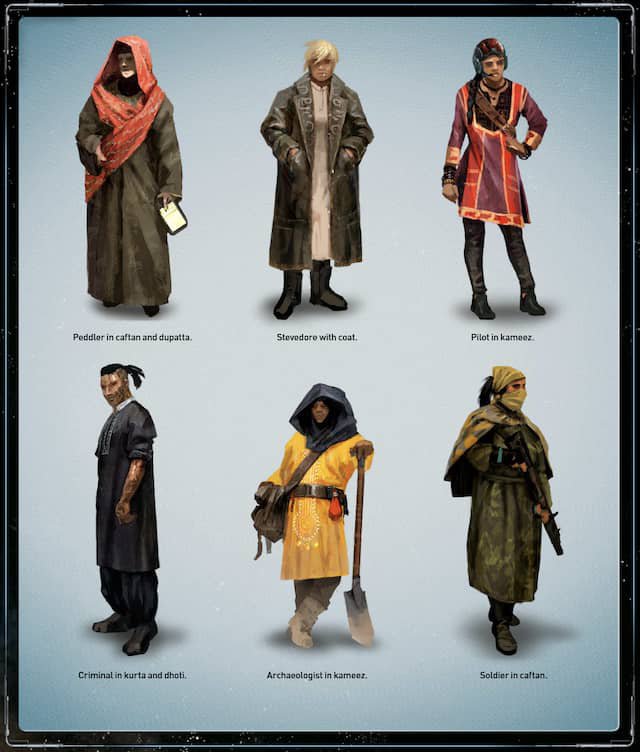
Learn your kurtas and caftans! There are sections in the book that will help you understand the styles and fashions of Coriolis, helping to bring this setting to life!
Fight Night
Before we move on with some of the larger concerns I have with Coriolis, I wanted to take a brief time out to highlight some features of combat and crewing your ship. Both are big features, and I’d be remiss not to discuss them at least a little. Let’s start with a few of the things I love the most about combat.
As stated earlier, a character’s skills will determine how well they’re able to hit foes. All rolls are still kept within the d6 dice pool that is used throughout the system. During combat, characters are granted 3 actions to spend however they wish. Some things like taking aimed shots or firing fully automatic weapons take up all 3 actions when making the relevant skill roll. Others, like normal attacks take only two. And quick attacks, at a penalty to hit out of their haste, take only a single action. Movement also costs an action, which adds a depth I’m always looking for in combat; do you move into a better position and set up for next turn, or do you take that aimed shot right now even if it means standing out in the open? Defending takes a “reaction” and costs a single action in itself. Do you go all out and barrage a foe, sacrificing your ability to duck a shot if fired back upon? Or do you play it safe and take a quick shot, saving two actions for defense until the next round? If the GM spends a DP to jam your gun, how will the reload throw off your planned actions for the next turn? You’ll have to adapt.
Once again, for a simple set of rules, the depth you can achieve in combat is quite complex. There are plenty of other small things you can do in combat. I’m naming just a few of the big ones here. The ubiquitous turn of “move and attack” still exists. But the decisions around how to best spend your three combat actions mean that you get a lot of variety if you choose to do something other than just the basics. It also needs to be mentioned that Coriolis has one of the absolute best rules for automatic fire I’ve ever seen. After your roll to hit (spending all three combat actions), you can choose to split your rolled sixes for hits on multiple targets. And then you can keep your finger on the trigger. You continue rolling six-sided dice one at a time. Any sixes are added to your total. You can stop anytime you want, but if you roll a 1 you must stop as you’ve run out of ammo. You’ll have to reload as well next turn. We talked about player greed before when I mentioned Darkness Points, and here we have another great example of letting players do awesome things if they want to gamble on the dice.

Combat balances on that fine line of simple but satisfying in its depth. A real masterful stroke on the part of the designers!
Ship combat is equally as interesting. Several of the skills which characters use on a personal level are also applicable to ship systems. This means that you don’t have to go out of your way when building your character to fit into a crew role! Your Command-based squadmate, for example, is probably also your captain. On the ground they’re an inspiring leader, and in space they’ll grant bonuses to the rest of the crew if those other characters choose to follow the orders given (they don’t have to, but they’ll get bonus dice on their rolls if they do). Captains are also the ones who roll initiative for the ship. Your tinkerers will be natural engineers, patching up the ship, overloading the systems for extra power as needed, and controlling the airlocks in case of docking/boarding. Any Data Spiders in the team will feel at home on sensor duty, achieving lock-ons, breaking enemy locks, and hacking enemy systems. Similarly, your soldier types who love a good rifle will deftly ply their skills as ship’s gunner, using bonuses granted from the other stations to make sure the enemy ship erupts into flames before yours does. Lastly is the pilot, a role that speaks for itself. The pilot’s role is never to be underestimated, and a true hotshot never goes amiss behind the controls! Each of these roles gets a phase in combat, ensuring that everyone is engaged when fighting in space just like when they’ve got feet on the ground.
If you have less than 5 people in your crew, characters can double up on one or more of these roles. A crew of two, for example could have a captain who’s also the pilot and gunner while their buddy takes on the roles of engineer and sensor operator. In the case of single-seat fighters, the pilot counts for all of these roles. And if you have AI installed in the ship, you can assign it to any of these functions in a pinch (though it’s never going to be as good as a trained human). There are all kinds of other goodies to mess with in terms of ship systems, such as “going silent” and turning off your transponder. It’s illegal, but depending on your crew/ship/job you might not care. Remember how we talked about anything being possible during character and ship creation? It all translates directly to how you handle ship-to-ship combat! Whether your crew likes to breach and board an enemy, gun them out of the sky, launch torpedoes from afar, or just hit the burners and leave their pursuers in their wake, the stars are the limit here. Along with your imagination.
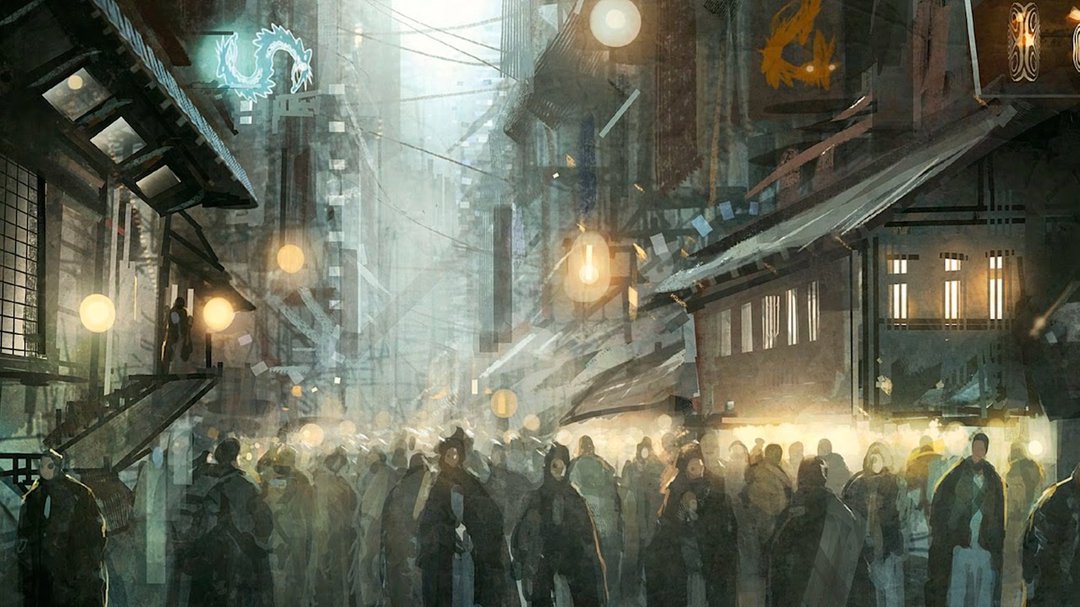
Speaking of imagination, share some of the artwork in this book with your players. It will set them up to visualize this fantastical universe even more!
Cautions For The Space Bound
You might be getting the feeling at this point that I think Coriolis is the best ship-based space TTRPG I’ve read to date. And you’d be right! I love the simple system spiced up with all the modifiers and combat choices. I love how character builds make them immediately viable as a ship’s crew. And the setting has near endless potential. But I’d be silly to let you walk into all of this without hearing some of my big concerns with who this game is for.
Let’s start small and work up.
To start out, the formatting of the book leaves a lot to be desired. If you’ve read one of my RPG reviews already, say Altered Carbon, then you know I’ve always got an eye out for the prospective GM. You’ll be the one who has to learn all the rules and lore, and you’ll have to teach it to your friends. The Coriolis core book doesn’t exactly make running these games the smoothest experience. The book itself has clear chapters and a useful table of contents and index, but there is a lot of “extra” put into the margins. Charts of information and modifiers are found everywhere. While the book is perfectly functional, I really wish there’d been an appendix that brought all the various charts of modifiers, ship ranges, and other useful reference info together in one place. I don’t mind visiting the equipment chapter when looking up stats on a few weapons, but pulling together all the different ways skill rolls can be modified is a chore. Maybe this is fixed by a GM screen (which I don’t own), but I also don’t believe you should have to buy extras to fix something that should be solidly standalone in a core book.
Thankfully, as concerns go this is the least of my issues. The format that all modifiers follow, ranging from bonuses/penalties of 1 to 3, means that GMs can wing such modifiers easily on the fly. Put a couple of bookmarks in your copy of Coriolis for those few extras you need an actual reference to. Problem solved! Annoying, but not a game ender.
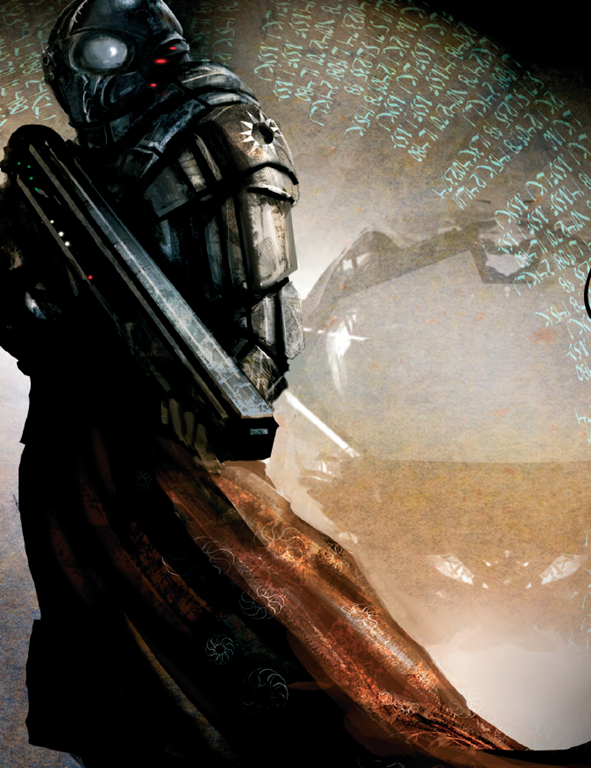
Armor and cloth blending for another unique look in this game's fantastic artwork.
A friend I showed Coriolis to came up with a very interesting point that, the more I thought about it, the more I could not ignore. Concern number two is the religious aspect of the setting. This honestly was invisible to me, being a fictional setting and a fantastical, sometimes supernatural one at that. But I appreciate that we all have our own filters we go through life with. My friend, in particular, was irked by the “praying to the Icons” action. Remembering from earlier that this is the thematic link to rerolling dice, it brings up a very interesting concern for some.
Coriolis doesn’t demand that you play a religious character. The differences in the lore between the more pious Firstcome, the original settlers of the Third Horizon, and the Zenithians, those who arrive on the seed ship much later, is laid out from the start. Zenithians may give varying degrees of acknowledgement to the local religion, but they tend to lean on science more regularly. Their devotion may be genuine at best to lip service at the least. This allows players who don’t want to be particularly religious to give their characters an “out”. Play someone of Zenithian descent. However, if you want to reroll dice, you are still praying to the Icons. It’s hard-baked into the mechanics. I’m glad my friend brought this up to me, as they just weren’t comfortable with this image during play. Sure, they didn’t have to partake, but consciously not using one of the game’s most core mechanics is a massive downside.
This may not matter to you and your friends at all, but it is certainly a concern that each group will have to weigh when determining if Coriolis fits. The Third Horizon has a blend of supernatural and science, old faith and new ideas. Inventions and monsters. That’s part of the lore, the setting, and the feel of the worlds. Take it as it comes or don’t. The choice is yours.
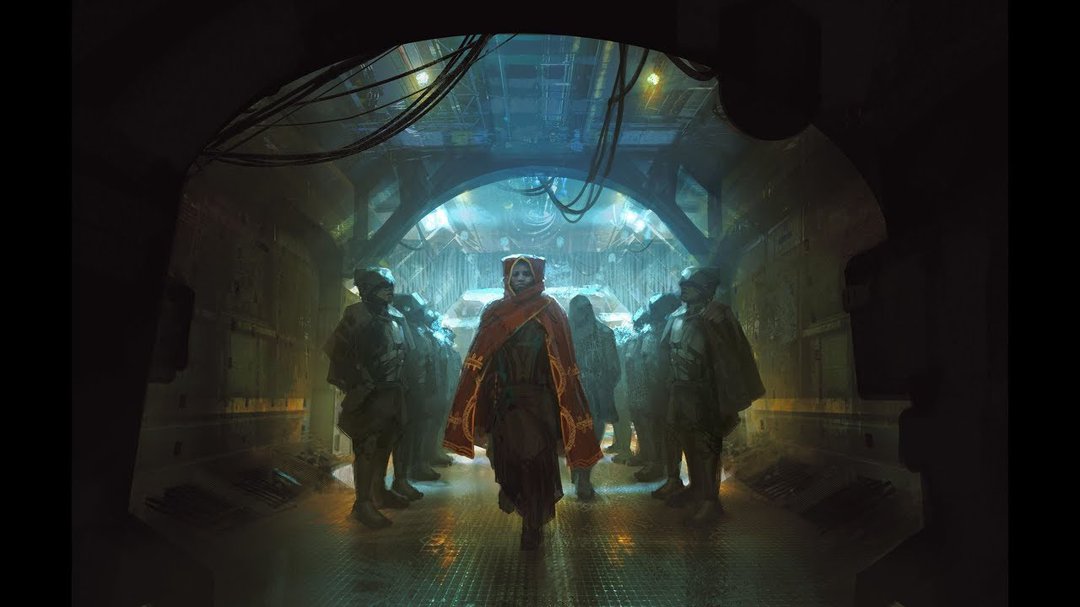
The religious aspects of the lore go hand in hand with the mechanics. A consideration for those that might find it an aversion instead of a draw.
And this brings me to my largest of concerns with Coriolis: the issue of choice. I’ll say up front here that this one’s a big “mileage may vary” issue depending on your preferences. Massive grain of salt with this criticism. What if I told you that the ongoing story within the lore was yours to do with as you please, but also wasn’t. I’ll explain.
If you take Coriolis as just its core book, what you get is a fantastic value for your money. You get everything you need to run a game and enough lore to keep you writing new stories for years. I started to notice some cracks in that lore, though, as I got further and further through the chapters. You see, most core books give you snippets, one-liners and hints, to guide your thinking on the larger vision behind events. Take my favorite Overlight, for example. The book is peppered with little insinuations that a clever GM can run with, a holding hands if you will between the book’s authors and those that play. Coriolis has none of these. Instead, Coriolis’s snippets are examples and quotes, real-time manifestations of things it’s just taught you. There’s no reading between the lines here.
This gets especially grievous when it comes to big plot developments like the Emissary of Xene. Remember them? That’s the being that claims to be an incarnation of an Icon I mentioned at the start of this review. The one that kicks off a massive interstellar incident. There is no further information about the Emissary or their people in the core book. What’s the big deal you might say? If you’re happy to invent lore, then you’ll be perfectly happy here. My concern isn’t exactly with this lack in the core book, though. It’s how this information is handled by the rest of Coriolis’s supplements.
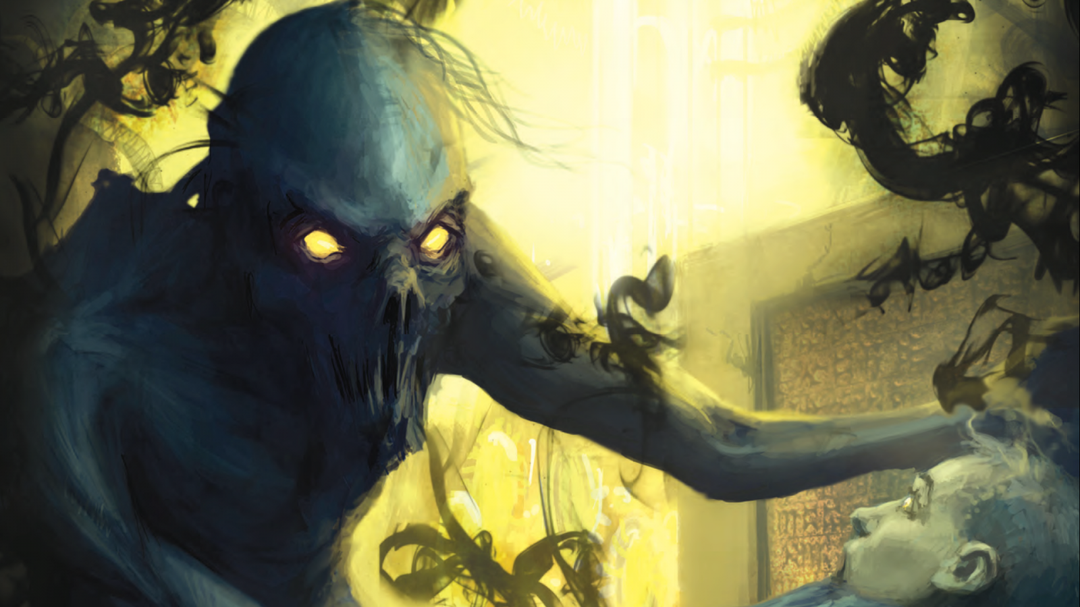
There are things out there that will make good stories at the next port you pull into. If you survive them that is. And if anyone believes you.
We all love expansions. Whether they’re for RPGs or our beloved board games, anything that adds more to something we already love is always welcome. Right? In researching more on Coriolis, I may have come across the first set of expansions I take issue with. While just the core book is in your hands, you have complete license over your own game’s path. Once you get into expansion books, however, it becomes clear that the story is not yours. It exists in the heads of the creators and we’re just along for the ride.
It's my opinion that an expansion or supplement should be just that: an addition to what already is. If we come back to Overlight for a moment, examining a supplement like The Ivory Mausoleum sheds light perfectly on what I’m talking about. The module provides an adventure that can be slotted into a campaign without breaking any lore a GM may have invented. Furthermore, while it advances the overall plot of the world, it does so in a way that works in harmony with any developments a GM may have woven into their own story. It adds updates to politics, new creatures, and possibly new recurring NPCs. It doesn’t undo anything that’s already been established in play. It only builds.
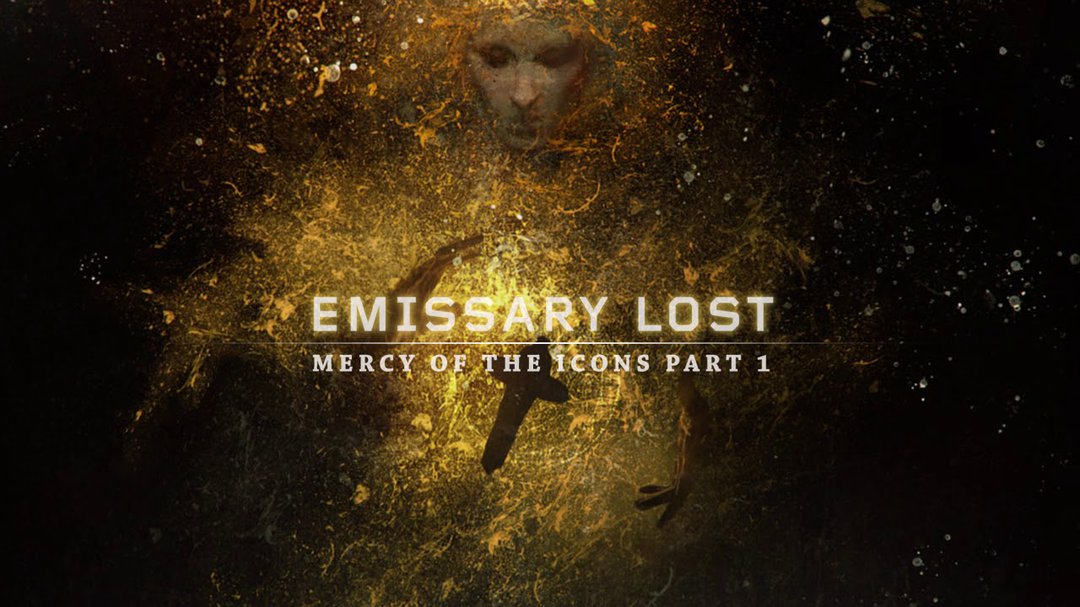
Unfortunately, some of the answers are only going to be found once you get here. And they're not small, tangential plot points. They're core to the main points of the setting.
The extra books for Coriolis do not do this. They’re less like supplements to enhance your universe and more like additional chapters in a Netflix show. There’s a plot already written. You won’t know it until you buy the next installment. As a lore lover, someone who covets every scrap of secrets to build out my world, this messes with me to no end. I’m stuck in an odd position, personally, of feeling the need to buy every book before running a campaign. There are no hints in the core book that I could run with, setting things up while mixing in the supplemental adventures later. I don’t feel like I’ve been handed a stand-alone core book to play with as I see fit. I feel like I’ve instead got the first season of a new show, and I’ll have to buy the rest if I want to know how things officially go. If I weave the Emissaries into my plot too early, I’m left in an awkward position later. If we were at least given some of their driving motivations, I could have them play along those lines until I was ready to get to a supplement, but we aren’t even given that basic information.
Again, this may be of no concern to you, but it does beg the question of who Coriolis will best fit. Groups who buy just a core book and leave it at that will never care about this concern. They’ll build their own Horizon and never look back. Similarly, folks who are all-in won’t have much of an issue with this either. If you love everything Coriolis has to offer, and you absolutely have to own it all, then you’ll be ok too. You were already going to grab each book. It’s the folks like me who will find themselves the odd ones out, lovers of the freedom a core book offers while at odds with wanting the rest of the official lore that then revokes that freedom. It wouldn’t be such an issue if the lore reveals of the supplements weren’t so central to Coriolis, but these are some of the biggest questions and driving forces in the setting.
In the end, I can’t help but feel we’re being sold someone else’s space epic. Someone else’s campaign rather than a setting to make our own. For some, that will be an incredible draw rather than a drawback. For others it could be a dealbreaker, so please consider carefully which camp you fall into. I’ve peeked into the dangerous realm of spoilers, and I have to say that at the far end of the tunnel is the light of freedom once again; if you have the complete picture, there is room for interpretation in the Third Horizon. But getting there is a heavy investment. If this doesn’t sound at all like a concern for you or your group, or you’ll just be sticking to the core book no matter what, then I wholeheartedly say you’re safe purchasing Coriolis.
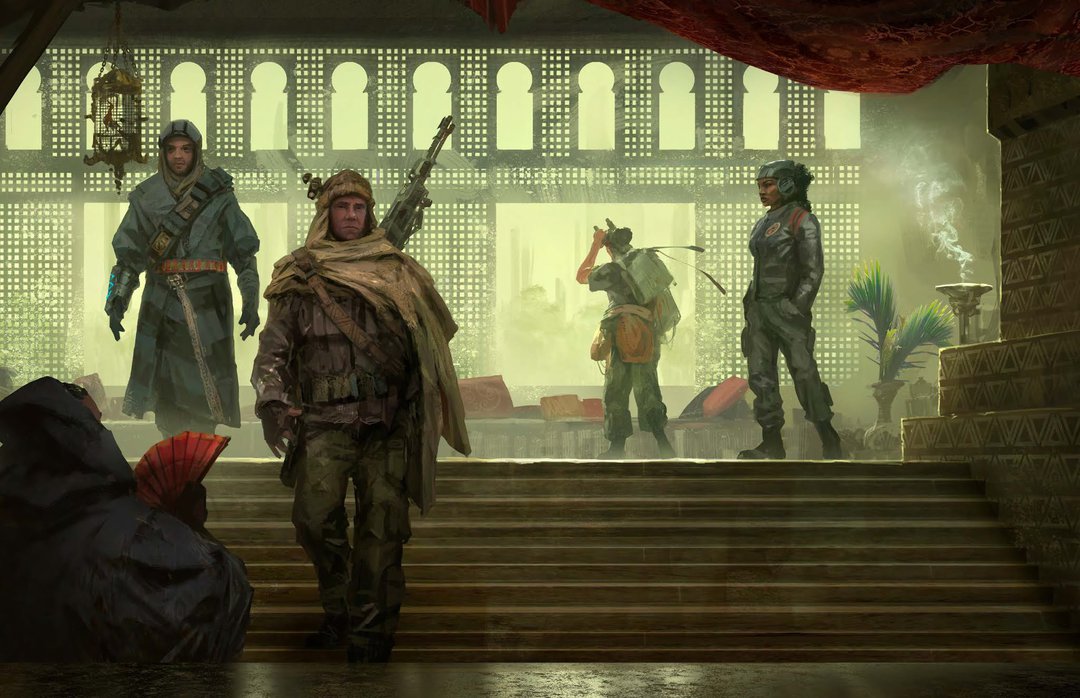
This setting in one word: evocative. It knows the feel it wants to convey, and it absolutely nails it!
Jumping Into The Third Horizon
This game has a lot to offer. My criticisms may go on at some length, but make no mistake that they are more to guide who might be bothered by the game’s overall quirks more than anything; those who aren’t bothered by them will love everything Coriolis brings to the table. On the strength alone of solid dice mechanics, spicy modifiers and combat, and one of the best ship creation/crew engagement systems I’ve ever seen, Coriolis still won’t be leaving my shelves anytime soon. It fills a void in our TTRPG spaces that is sorely underserved: a genre where we can build our own ship and crew it any which way we want. The freedom that offers, however, does stand at odds with the official lore of the setting. While this is not a review of the supplemental books, it’s important to take them in the context of Coriolis as a whole, as they are so central to the main plot points laid out in the core book.
Is Coriolis for you? A universe filled with politics, ancient monsters inspired by Middle-Eastern legend, mystical powers alongside space rifles, and more ships than you can shake a pylon at? I think that if you can navigate the concerns of the greater lore at hand, some feelings regarding the religious nature of the setting, and some messy reference material in the core book, this one becomes an absolute endorsement. Pound for pound, this hardcover still offers a lot. If you think it’s for you and your players, I think you’ll have an absolute blast of a time. Despite its flaws, you’ll be hard pressed to find another core book that offers as much for tossing a ship and crew into the darkness between the stars. What you find out there, well that’s a step you’ll take together when you play.